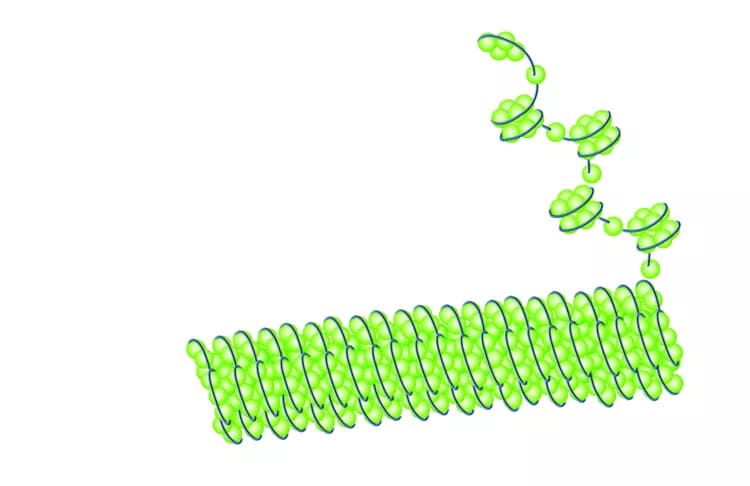
Novel Histone Modifications Couple Metabolism To Gene Activity
Scientists of Helmholtz Zentrum München and Ludwig-Maximilians-Universität Munich (LMU) have discovered that two new classes of histone modifications couple cellular metabolism to gene activity. The study was published in 'Nature Structural and Molecular Biology'.
DNA is wrapped around proteins called histones, which serve to package the DNA inside the cell nucleus and play an important role in regulating gene expression. Histone proteins can be modified with small chemical groups, many of which are products of cellular metabolism. By impairing or enhancing transcription, these modifications are able to influence gene activity.
While this could provide a potential mechanism through which our environment -- for example the food we eat -- can lead to changes in gene expression, it remains unclear how histone marks are really coupled to cellular metabolism and how this might affect chromatin organisation and gene activity.
In this study, Robert Schneider's team from the Institute of Functional Epigenetics (IFE) at Helmholtz Zentrum München and LMU looked at two novel modifications, propionylation and butyrylation (i.e. the addition of propionyl and butyryl groups to the histone proteins). The researchers found that propionyl and butyryl groups can be present on histone H3, specifically at lysine residue 14 (H3K14).
Propionate and butyrate are products of fatty acid metabolism
According to the study, these modifications specifically mark highly expressed genes and their presence changes upon metabolic alterations, for example upon fasting. The researchers also showed that histone propionylation can drive transcription in the test tube (in vitro) suggesting it is a stimulatory mark capable of causing genes to be expressed when it is present. "Interestingly, propionate and butyrate are products of fatty acid metabolism" explains Robert Schneider. "This means that these histone modifications might be a way through which the metabolic state of the cell is linked to chromatin architecture."
One way in which histone modifications elicit biological responses is by being recognised by specific proteins, so-called "readers." Using a combination of pulldown assays and mass spectrometry, the team identified the specific reader proteins for these novel marks. The addition of these marks in response to fatty acid metabolism and binding of the reader proteins changes the signature of chromatin and thus it's functional state. "These results are especially significant with regard to metabolic diseases, like diabetes and obesity" said Schneider. "Our aim now is to study the role of these new gene switches in disease models."
The results suggest a possible role for histone propionylation in metabolic signalling and disease as propionyl-CoA carboxylase (the enzyme that degrades this co-factor) is implicated in metabolic diseases and indeed alters histone propionylation.
Materials provided by Helmholtz Zentrum München - German Research Center for Environmental Health. Note: Content may be edited for style and length.
Disclaimer: DoveMed is not responsible for the accuracy of the adapted version of news releases posted to DoveMed by contributing universities and institutions.
References:
Adam F Kebede, Anna Nieborak, Lara Zorro Shahidian, Stephanie Le Gras, Florian Richter, Diana Aguilar Gómez, Marijke P Baltissen, Gergo Meszaros, Helena de Fatima Magliarelli, Aaron Taudt, Raphael Margueron, Maria Colomé-Tatché, Romeo Ricci, Sylvain Daujat, Michiel Vermeulen, Gerhard Mittler, Robert Schneider. (2017). Histone propionylation is a mark of active chromatin. Nature Structural & Molecular Biology. DOI: 10.1038/nsmb.3490
Related Articles
Test Your Knowledge
Asked by users
Related Centers
Related Specialties
Related Physicians
Related Procedures
Related Resources
Join DoveHubs
and connect with fellow professionals

0 Comments
Please log in to post a comment.